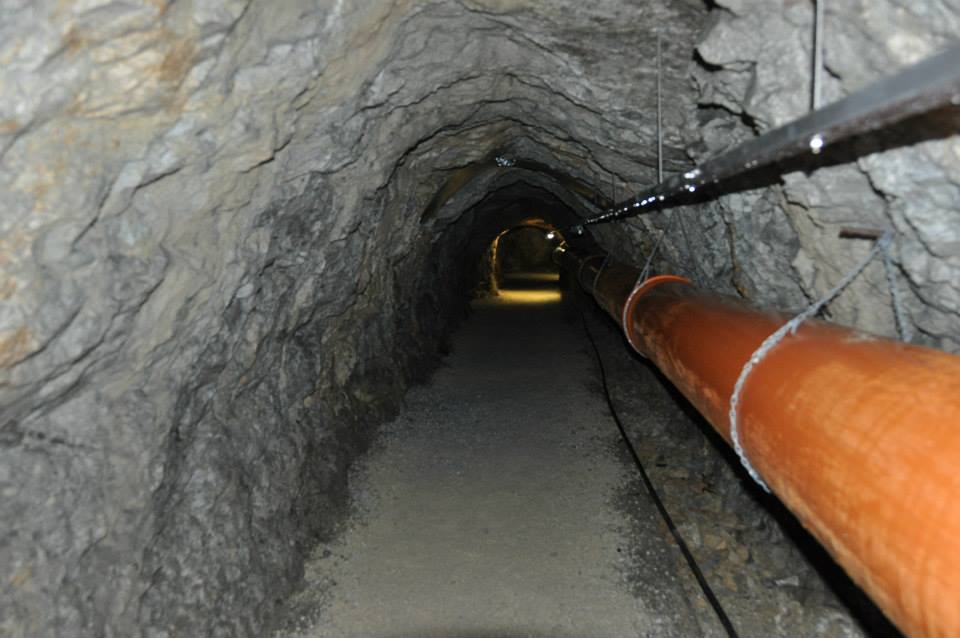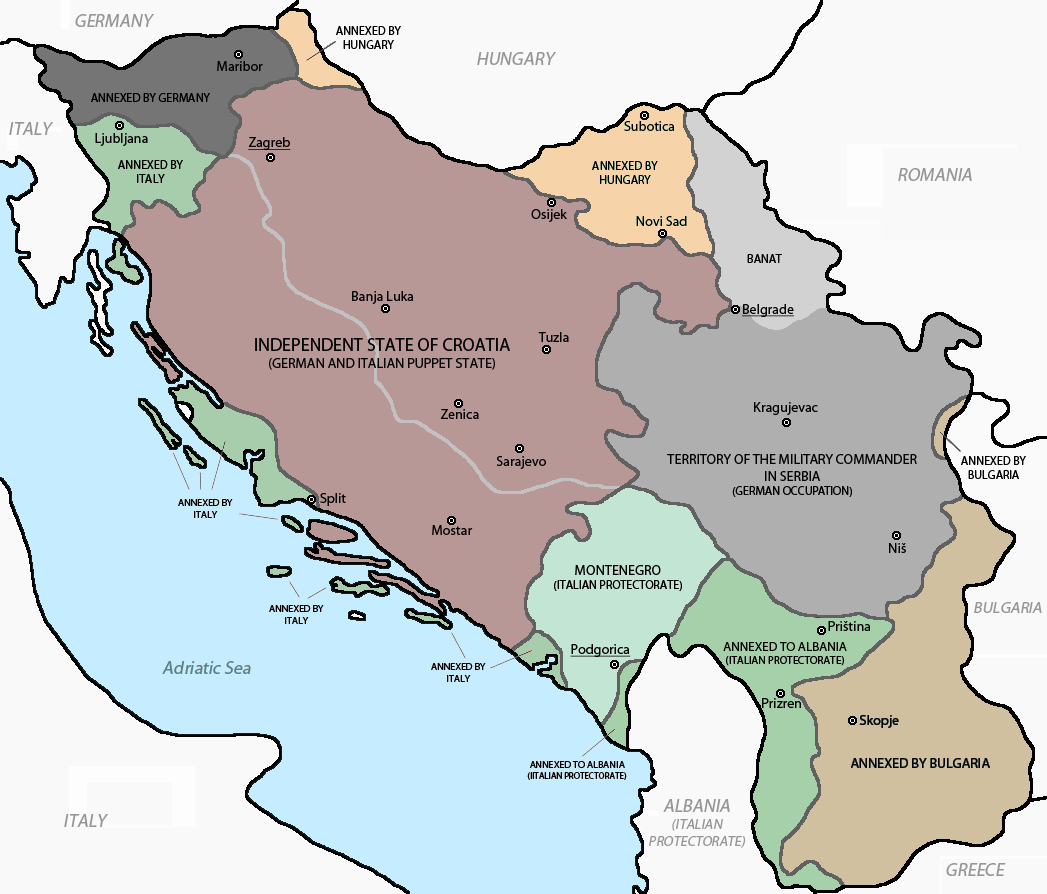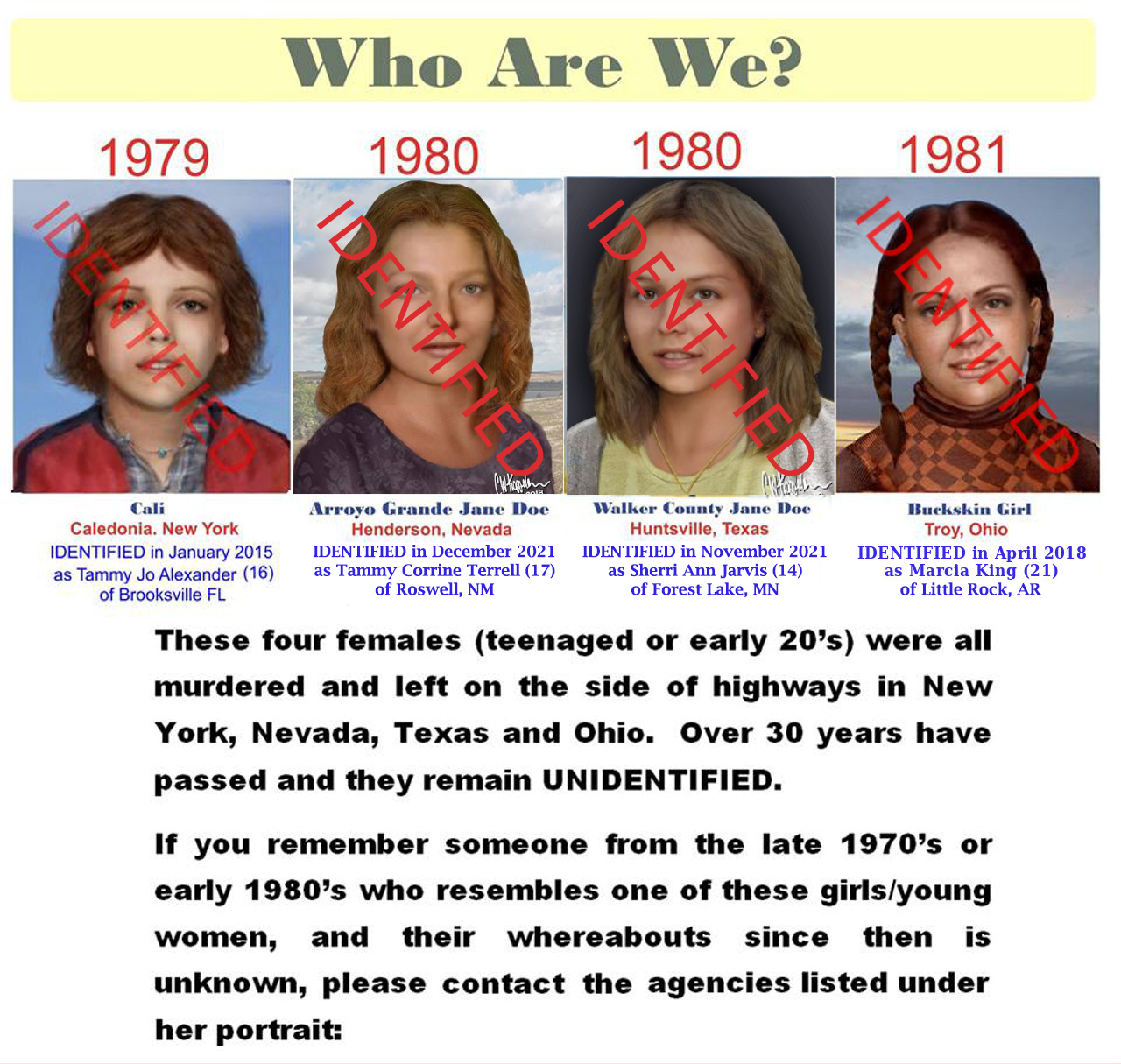|
Barbara Pit Massacre
The Barbara Pit massacre (, ), also known as the Huda Jama massacre, was the mass killing of prisoners of war of Ante Pavelić's NDH Armed Forces and the Slovene Home Guard, as well as civilians, after the end of World War II in Yugoslavia in an abandoned coal mine near Huda Jama, Slovenia. More than a thousand prisoners of war and some civilians were executed by the Yugoslav Partisans during May and June 1945, following the Bleiburg repatriations by the British. The location of the massacre was then sealed with concrete barriers and discussion about it was forbidden. The mass grave site, one of the largest in Slovenia, was first publicly discussed in 1990, after the fall of communism in Yugoslavia. A memorial chapel was raised near the entrance to the mine in 1997. Investigation of the Barbara Pit mine began in 2008. It took several months for workers to remove concrete walls built after the war to seal the cave. On 3 March 2009, investigators found 427 unidentified bodies at ... [...More Info...] [...Related Items...] OR: [Wikipedia] [Google] [Baidu] |
Bleiburg Repatriations
The Bleiburg repatriations ( see terminology) were a series of forced repatriations from Allied-occupied Austria of Axis-affiliated individuals to Yugoslavia in May 1945 after the end of World War II in Europe. During World War II, Yugoslav territory was either annexed or occupied by Axis forces, and as the war came to end, thousands of Axis soldiers and civilian collaborators fled Yugoslavia for Austria as the Yugoslav Army (JA) gradually retook control. When they reached Austria, in accordance with Allied policy, British forces refused to take them into custody and directed them to surrender to the JA instead. The JA subsequently subjected them to death marches back to Yugoslavia, where those who survived were either subject to summary executions or interned in labor camps, where many died due to harsh conditions. The repatriations are named for the Carinthian town of Bleiburg, where the initial British refusal to accept the surrenders occurred, and from which some repatria ... [...More Info...] [...Related Items...] OR: [Wikipedia] [Google] [Baidu] |
Unidentified Decedent
Unidentified decedent, or unidentified person (also abbreviated as UID or UP), is a corpse of a person whose identity cannot be established by police and medical examiners. In many cases, it is several years before the identities of some UIDs are found, while in some cases, they are never identified. A UID may remain unidentified due to lack of evidence as well as absence of personal identification such as a driver's license. Where the remains have deteriorated or been mutilated to the point that the body is not easily recognized, a UID's face may be reconstructed to show what they had looked like before death. UIDs are often referred to by the placeholder names "John Doe" or "Jane Doe". In a database maintained by the Ontario Provincial Police, 371 unidentified decedents were found between 1964 and 2015. Causes There were approximately 14,000 UIDs in the United States as of 2023. A body may go unidentified due to death in a state where the person was unrecorded, in an advanc ... [...More Info...] [...Related Items...] OR: [Wikipedia] [Google] [Baidu] |
Gottscheers
Gottscheers (, , ) are the German settlers of the Kočevje, Kočevje region (a.k.a. Gottschee) of Slovenia, formerly Gottschee, Gottschee County. Until the World War II, Second World War, their main language of communication was Gottscheerish, a Bavarian language, Bavarian dialect of German. History Duchy of Carniola In 1247, Berthold (patriarch of Aquileia), Berthold, Patriarch of Aquileia, transferred fiefdom of Ribnica, Ribnica, Ribnica and its Lower Carniola, Lower Carniolan environs to the Counts of Ortenburg, a Carinthian noble family. This area included the primeval forest area that would eventually become known as the Gottschee. In 1336, Patriarch Bertrand of Saint-Geniès reaffirmed and expanded the rights and responsibilities of Otto V of Ortenburg and his successors as rulers of the area. Starting in 1330 and continuing until ''circa'' 1400, the Counts of Ortenburg settled German peasants from East Tyrol and Carinthia within their fiefdom. In 1377, the town of Ko� ... [...More Info...] [...Related Items...] OR: [Wikipedia] [Google] [Baidu] |
Kočevje
Kočevje (; ; ''Göttscheab'' or ''Gətscheab'' in the local Gottscheerish dialect; ) is a town and the seat of Municipality of Kočevje in southern Slovenia. Geography The town is located at the foot of the Kočevski Rog karst plateau on the Rinža River in the historic Lower Carniola region. It is now part of the Southeast Slovenia Statistical Region. The Rinža River flows through the town. Lake Kočejve, a former open-pit coal mine, lies northeast of the town center. Climate Kočevje features a humid continental climate (''Dfb''/''Cfb''). Name Kočevje was attested in written sources in 1363 as ''Gotsche'' (and as ''Gotsew'' in 1386, ''Kotsche'' in 1425, and ''propre Koczeuiam'' in 1478). The name is derived from ''*Hvojčevje'' (from ''hvoja'' 'fir, spruce'), referring to the local vegetation. The initial ''hv-'' changed to ''k-'' under the influence of German phonology. Older discredited explanations include derivation from the hypothetical common noun ''*kočev ... [...More Info...] [...Related Items...] OR: [Wikipedia] [Google] [Baidu] |
Teharje Camp
The Teharje camp () was a concentration camp near Teharje, Slovenia, organised by the OZNA, Yugoslav secret police (OZNA) after the end of World War II in Yugoslavia. It was primarily used for the internment of Slovene Home Guard prisoners of war, Danube Swabians, ethnic Germans, and Slovenian people, Slovene civilians. The camp was built in 1943 by German forces and was used as a military camp for Hitler Youth. It had six residential barracks and ten other buildings. The camp was abandoned for a short time after the war, but was reactivated by the Yugoslav communists at the end of May 1945 to accommodate former members of the Slovene Home Guard and others that had collaborated with the Axis, as well as civilians that had fled before the advancing Yugoslav People's Army to Allied camps in Austrian Carinthia (state), Carinthia. On 31 May 1945, the entire 2nd Assault Battalion of the Slovene Home Guard, headed by Vuk Rupnik, was brought to Teharje, and in the first days of June 1945 ... [...More Info...] [...Related Items...] OR: [Wikipedia] [Google] [Baidu] |
Dravograd
Dravograd (; ) is a small town in northern Slovenia, close to the border with Austria. It is the seat of the Municipality of Dravograd. It lies on the Drava River at the confluence with the Meža and the Mislinja. It is part of the traditional Slovenian provinces of Carinthia and the larger Carinthia Statistical Region. History From 976 onwards the Dravograd area was part of the Duchy of Carinthia. The German name ''Unterdrauburg'' denoted the place where the Drava River left Carinthia and flowed into the neighbouring Duchy of Styria. It corresponded with Oberdrauburg up the river at Carinthia's western border with the County of Tyrol. The name Dravograd was invented during the Slovene national revival in the 19th century and was inspired by the Serbo-Croatian language, as the term 'grad' does not mean 'city, town' in Slovene, but 'castle'. Previously, the local Slovene name of the town was ''Traberk'', a derivative of the German name ''Drauburg''. The 19th century was a peri ... [...More Info...] [...Related Items...] OR: [Wikipedia] [Google] [Baidu] |
OZNA
The Department for Protection of the People, commonly known under its Serbo-Croatian acronym as OZNA, was the secret police of Socialist Federal Republic of Yugoslavia, Communist Yugoslavia that existed between 1944 and 1946. Founding The OZNA was founded on May 13, 1944, according to decision of Josip Broz Tito and under the leadership of Aleksandar Ranković (''nom de guerre'' Marko), a top member of the Politburo until his downfall in 1966, and a close associate of Josip Broz Tito. On May 24, 1944, only a day before Operation Rösselsprung (1944), Operation Rösselsprung, Tito signed the Military Courts Regulations (), which in article number 27 stated that the court reaches its decisions whether the accused are guilty or not based on its free evaluation, regardless of the evidence. Based on the investigations performed by the OZNA, the military courts reached their decisions. Function Until the OZNA was established, intelligence and security tasks were carried out by several ... [...More Info...] [...Related Items...] OR: [Wikipedia] [Google] [Baidu] |
Bleiburg
Bleiburg () is a small town in the south Austrian state of Carinthia (''Koroška''), south-east of Klagenfurt, in the district of Völkermarkt, some four kilometres (2.5 miles) from the border with Slovenia. The municipality consists of the twelve '' Katastralgemeinden'' Aich (''Dob''), Bleiburg, Grablach (''Grablje''), Kömmel (''Komelj''), Moos (''Blato''), Oberloibach (''Libuče''), Rinkenberg (''Vogrče''), Sankt Margarethen (''Šmarjeta''), Schattenberg (''Senčni kraj''), Unterloibach (''Libuče''), Weißenstein (''Belšak'') and Woroujach (''Borovje''). According to a 2001 census, 30.4% of the population are Carinthian Slovenes (in 1971, they were 52.8%). Geography The border town is located in the valley of the Feistritz creek, a right tributary of the Drava, north of the Peca massif of the Karawanks mountain range. It is home to a district court, military barracks and to the local productive and services industry. The name of Bleiburg, literally meaning 'Lead Castle', ... [...More Info...] [...Related Items...] OR: [Wikipedia] [Google] [Baidu] |
Allies Of World War II
The Allies, formally referred to as the United Nations from 1942, were an international Coalition#Military, military coalition formed during World War II (1939–1945) to oppose the Axis powers. Its principal members were the "Four Policemen, Big Four" – the United Kingdom, United States, Soviet Union, and Republic of China (1912–1949), China. Membership in the Allies varied during the course of the war. When the conflict broke out on 1 September 1939, the Allied coalition consisted of the United Kingdom, French Third Republic, France, and Second Polish Republic, Poland, as well as their respective Dependent territory, dependencies, such as British Raj, British India. They were joined by the independent dominions of the British Commonwealth: Canada, Australia, Dominion of New Zealand, New Zealand and Union of South Africa, South Africa. Consequently, the initial alliance resembled Allies of World War I, that of the First World War. As Axis forces began German invasion of ... [...More Info...] [...Related Items...] OR: [Wikipedia] [Google] [Baidu] |
Axis Powers
The Axis powers, originally called the Rome–Berlin Axis and also Rome–Berlin–Tokyo Axis, was the military coalition which initiated World War II and fought against the Allies of World War II, Allies. Its principal members were Nazi Germany, Fascist Italy, Kingdom of Italy and the Empire of Japan. The Axis were united in their far-right positions and general opposition to the Allies, but otherwise lacked comparable coordination and ideological cohesion. The Axis grew out of successive diplomatic efforts by Germany, Italy, and Japan to secure their own specific expansionist interests in the mid-1930s. The first step was the Italo-German protocol of 23 October 1936, protocol signed by Germany and Italy in October 1936, after which Italian leader Benito Mussolini declared that all other European countries would thereafter rotate on the Rome–Berlin axis, thus creating the term "Axis". The following November saw the ratification of the Anti-Comintern Pact, an anti-communis ... [...More Info...] [...Related Items...] OR: [Wikipedia] [Google] [Baidu] |
Independent State Of Croatia
The Independent State of Croatia (, NDH) was a World War II–era puppet state of Nazi Germany and Fascist Italy (1922–1943), Fascist Italy. It was established in parts of Axis occupation of Yugoslavia, occupied Yugoslavia on 10 April 1941, after invasion of Yugoslavia, the invasion by the Axis powers. Its territory consisted mostly of modern-day Croatia and Bosnia and Herzegovina, as well as some parts of modern-day Serbia and Slovenia, but also excluded many Croats, Croat-populated areas in Dalmatia (until late 1943), Istria, and Međimurje (region), Međimurje regions (which today are part of Croatia). During its entire existence, the NDH was governed as a one-party state by the Fascism, fascist Ustaše organization. The Ustaše was led by the ''Poglavnik'' Ante Pavelić."''Poglavnik''" was coined by the Ustaše and originally a title for the movement's leader. In 1941 it was institutionalized in the NDH as the title of first the Prime Minister (1941–1943), and then the ... [...More Info...] [...Related Items...] OR: [Wikipedia] [Google] [Baidu] |






